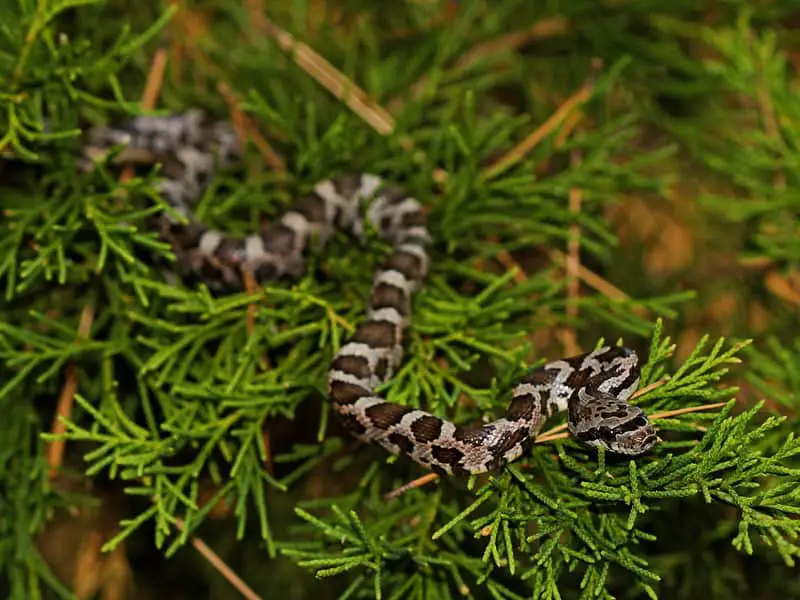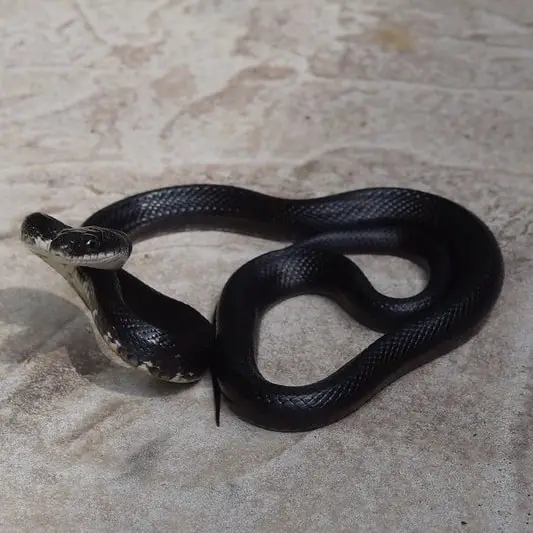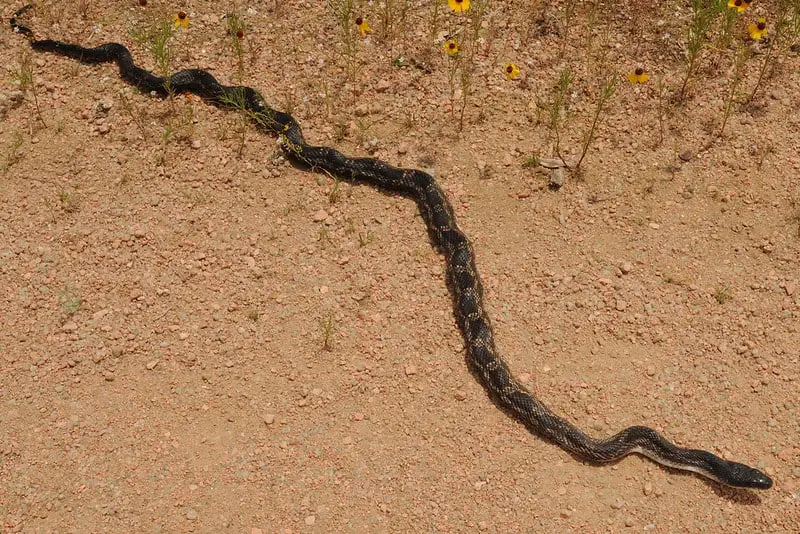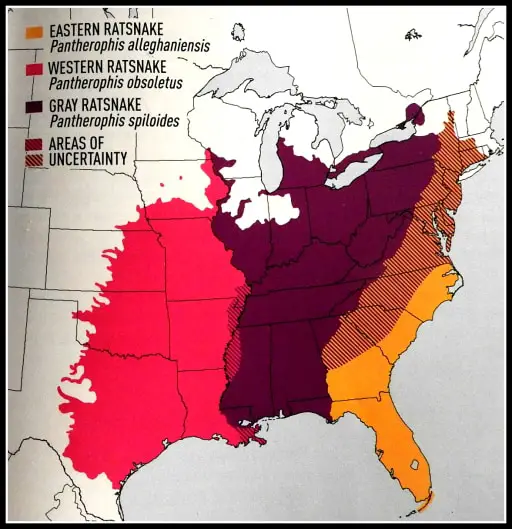Pantherophis obsoletus, commonly called the western rat snake or the black rat snake is a large nonvenomous snake species. It can be found in the central United States west of the Mississippi River as well as in Northern Mexico. With a length of up to 100 inches (250 cm), they are one of the longest snakes in the United States.
Size
Adults can become quite large. The longest specimen discovered to date was over 100 inches long (260 cm), making it (officially) the longest snake in North America. They reach an adult size of 70-80 inches (180-200 cm).
Description
The appearance of black rat snakes greatly differs over the lifecycle of the animal. Juvenile snakes are usually strongly patterned. They have a white or light grey base color covered with dark brown or grey/black blotches all over their body. Juveniles often look similar to the related fox snakes.

With increasing age, most western rat snakes lose their body coloration and turn almost completely black. Their belly usually remains light grey with some white/grey and black patterns along the transition.

Some adult snakes still some traces of the juvenile patterns, even when fully grown. Depending on the location, some variations in the appearance of the snake can be found. Even though there are currently no recognized subspecies, western rat snakes found in Texas have a somewhat different appearance. They are commonly called Texas rat snake. The Texas rat snake keeps some patterns even as an adult. While the belly is white/light grey and the base coloration is black (or very dark brown), they have several light brown or yellow patterns on their back. These patterns can look like connected chain links. They often fade towards the end of the body and turn completely black.

Diet and Habitat
The western rat snake prefers heavily wooded areas. It is an excellent climber, including the ability to climb the trunks of large trees even if there are no branches. It is often found in trees, eating bird’s eggs. The rat snake is a constrictor snake. When hunting, it bites into its prey, holds onto it and rolls its flexible body around it and suffocates the prey. Even though small mammals like mice and rats are its main prey, it also hunts other snakes, chipmunks, squirrels, eggs and birds.
Bite
The western black snake is a nonvenomous snake and does not pose any risk for humans. Even though it is a very large snake, it does not posses the power to suffocate a person. The first defense mechanism when the snake is threatened is to either escape quickly or roll up in a kinked way. If the first line of defense does not deter the attacker, it makes its tail vibrate. This form of mimicry of the rattlesnake has to potential to scare off some potential predators.
If the snake feels cornered or is handled, it can release a foul smelling musk and put up a tough fight. In this state, the snake will not hesitate to bite repeatedly. The snake’s teeth are not very large and a bite is not dangerous for humans. We still do not recommend handling fully grown adults.
Geographic range
The western rat snake can be found in the Central United States west of the Mississippi river from Iowa to Texas and Mexico. That means that it can be found in the following U.S. States: Iowa, Missouri, Arkansas, Louisiana, Mississippi, Texas, Oklahoma, Kansas, Minnesota and Nebraska. The following map shows the ranges of the three Pantherophis species (eastern rat snake, western rat snake, gray rat snake) in the United States:

Scientific classification of Pantherophis obsoletus
- Kingdom: Animalia
- Phylum: Chordata
- Class: Reptilia
- Order: Squamata
- Suborder: Serpentes
- Family: Colubridae
- Genus: Pantherophis
- Species: Pantherophis obsoletus
This species was formerly classified in the genus Elaphe and named Elaphe obsoleta.